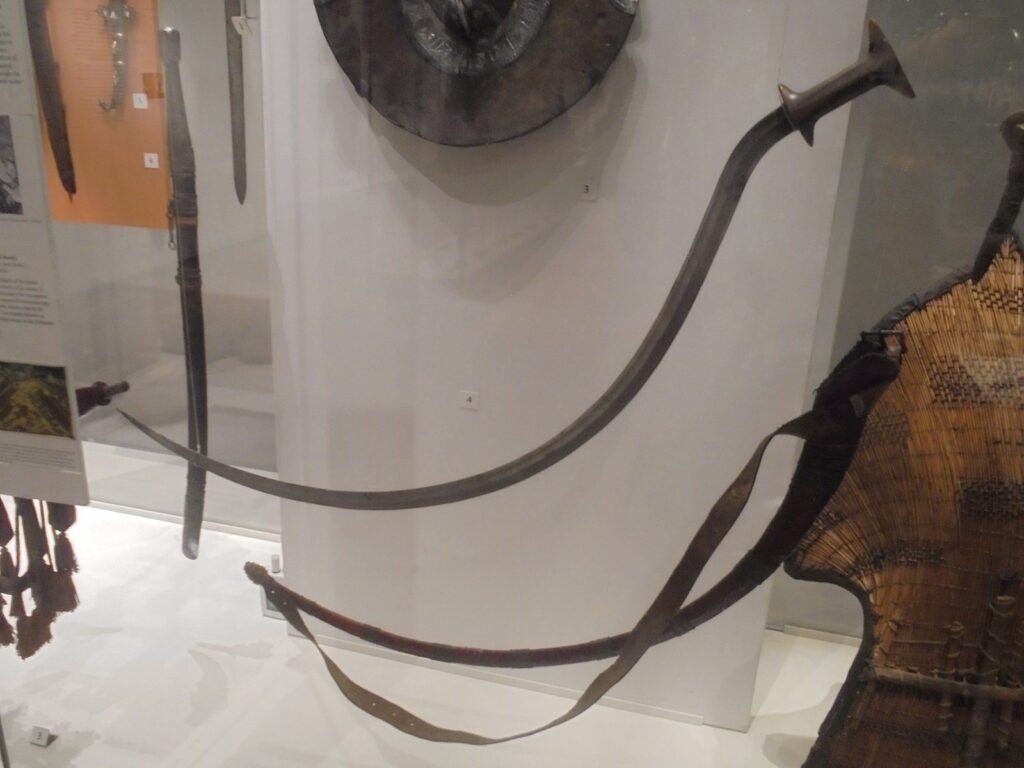Ancient weaponry certainly holds its own space in history.
Each country and culture created specialized tools of great importance. The design and success of a culture’s weaponry signified a degree of wealth and status. Let’s take a closer look at one called the shotel.

Origins of the Shotel
The curved, sickle-shaped sword, called a shotel, originated around 980 BC in what is now northern Ethiopia.
There is not a lot of information or archeological evidence about the culture. But it is believed that shotels were used in the D’mt (sometimes known as Damot, Di’amat) Kingdom. This existed in the 8th and 7th centuries BC.
It is not known if the D’mt Kingdom ended for some reason, or if it evolved into or was a smaller part of the larger Axum Empire (also known as Aksum) that came after. This empire was a great power that ruled the areas of what are now West Asia, Saudi Arabia, and Yemen for centuries. Today, the town of Axum has a population of around 67,000.
Design and Style
Regardless of exactly who wielded the ancient shotel, its construction was deliberate and unique. The sword’s deeply curved long blade created a strategic way to pull mounted warriors off their horses.
The shotel-wielding warriors were able to use the shape of the sword to reach around an opponent’s shield and strike. The length of the blade of a shotel sword was typically 40 inches but could measure anywhere from 20 to 40 inches in length.
The extreme, almost circular curve of the double-edged sword created a very exceptional and intimidating look. What the shotel seemed to lack, from any surviving examples that have been studied, was anything decorative.
The handles were simple and modest, fashioned with either wood or rhino horn. Both mounted and foot soldiers would have used the shotels, and the men who specifically carried the shotel were called “meshenitai.”
Uses in Battle
We can speculate that shotels were used in numerous battles during the reign of Amda Seyon I, who was emperor of Ethiopia between 1314 and 1344 AD. Amda Seyon is described in history as a bold warrior and ruler who led his empire to victory many times.
Most of his battles were fought against the Muslim kingdoms located to the south. Amda Seyon was able to grow his kingdom by slowly conquering several smaller states around him.
It is believed that the 19th-century Ethiopian Gurade sword also known as the saber, was modeled after the shotel. Crafted for more modern warfare without horses, the Gurade is a European style with a single-edge blade.

